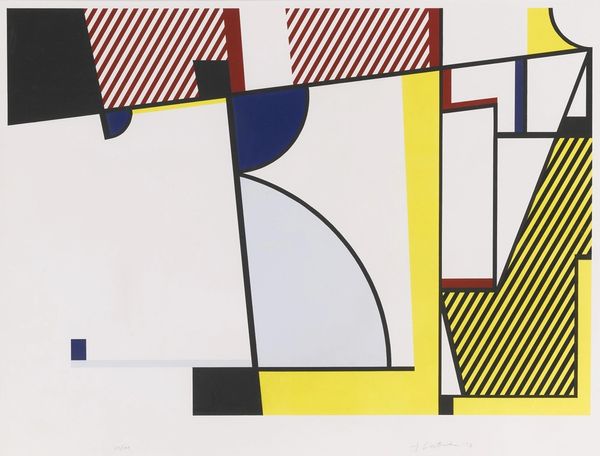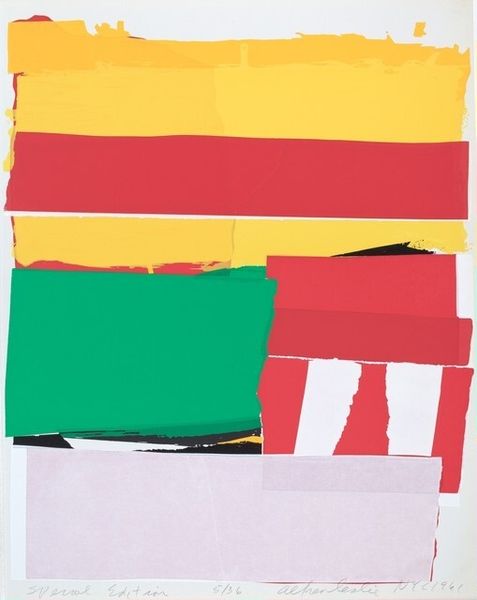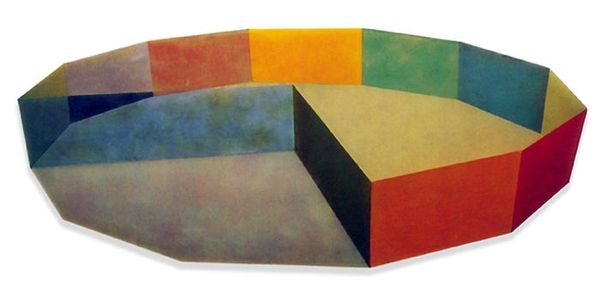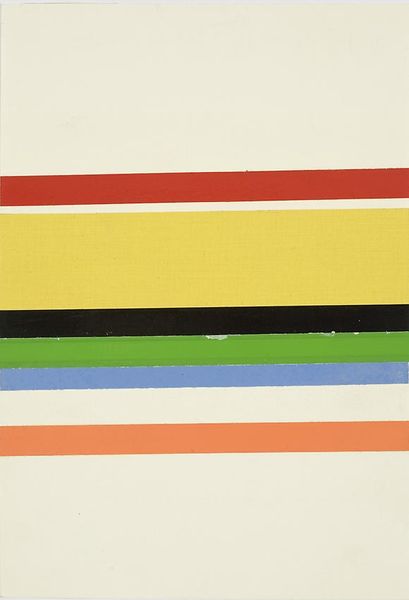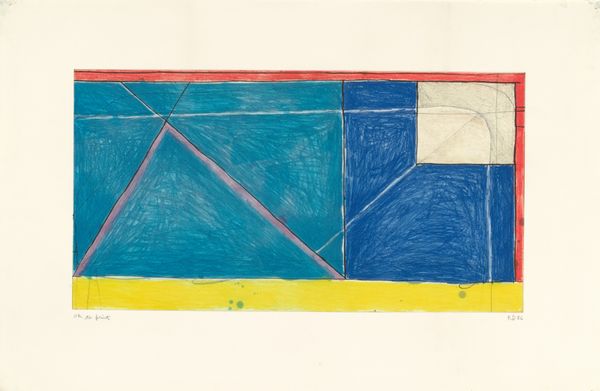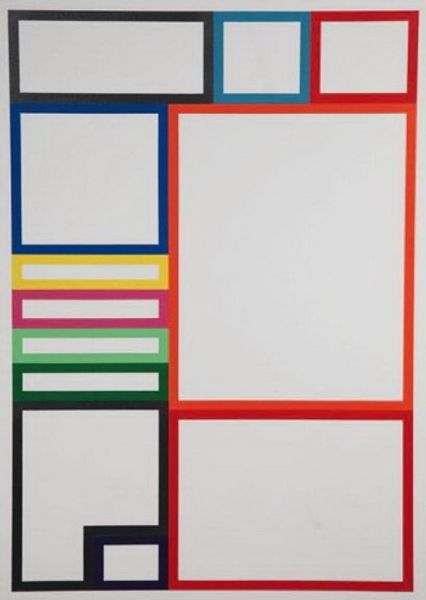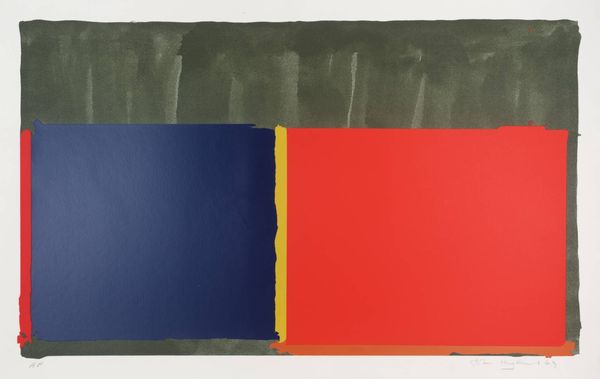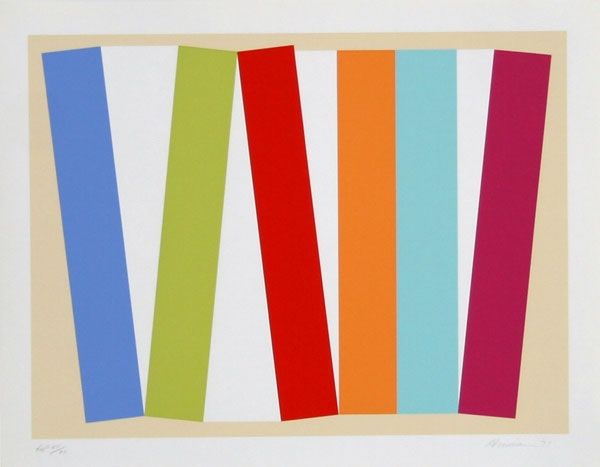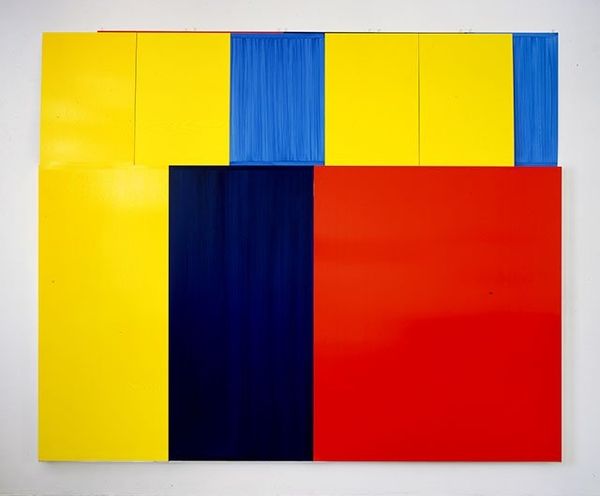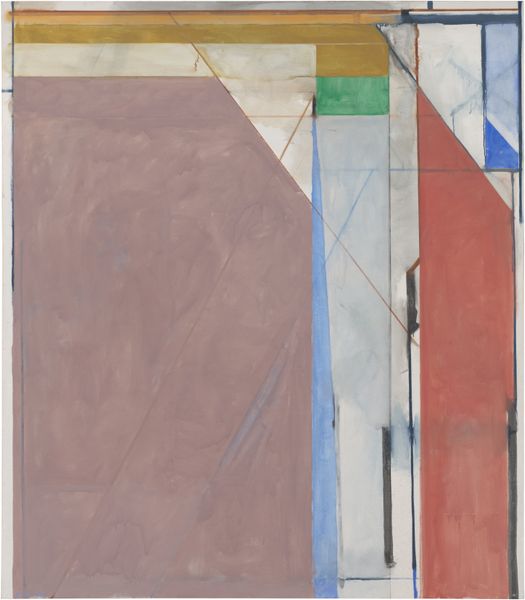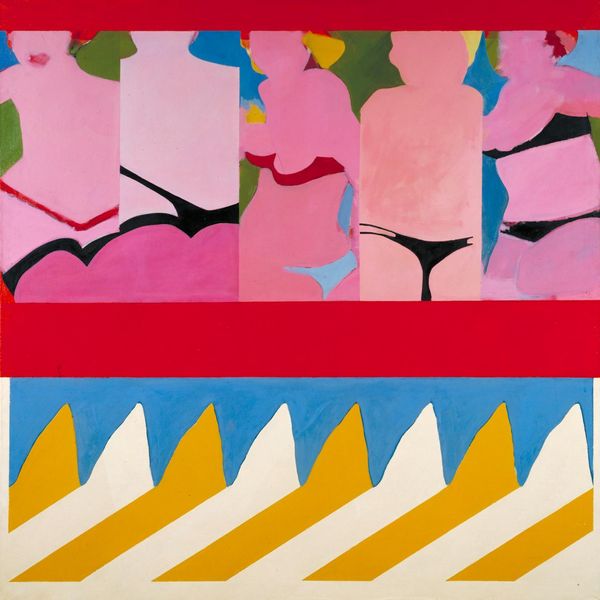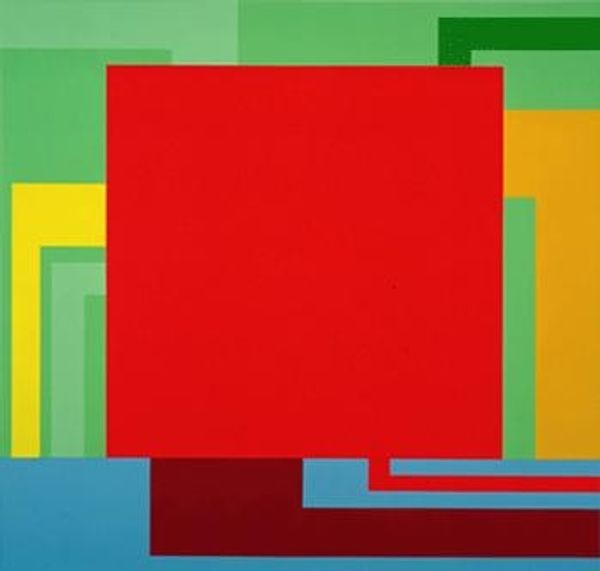
mixed-media, acrylic-paint
#
pop art-esque
#
abstract-expressionism
#
mixed-media
#
popart
#
pop art
#
acrylic-paint
#
geometric
#
pop-art
Copyright: Samuel Buri,Fair Use
Curator: Looking at this intriguing piece, what are your first thoughts? Editor: It feels very… fragmented. A bold, clashing of colors and forms. It evokes a sense of disruption, maybe even anxiety, hidden beneath a playful, pop-art-esque facade. Curator: You've picked up on its dynamic tension right away. This is "New Frontiers (Slogan von J.F. Kennedy)" created in 1964 by Samuel Buri, an intriguing piece working with mixed media and acrylic paint on wood. The title suggests a connection to the optimism, yet this abstraction leaves us questioning exactly what kind of new territory he envisions. Editor: "New Frontiers," especially tied to Kennedy's legacy, is such a loaded phrase. Post-war, pre-civil rights, this image complicates any easy sense of progress. The colors almost feel like propaganda—red, white, blue, the bright yellow. Is Buri critiquing that unbridled optimism or perhaps pointing to what gets left out of such a bold declaration? Curator: Exactly, the geometric forms can read as symbols, yet they're elusive, resistant to fixed meaning. We are familiar with the use of yellow as symbolic of the betrayal and double dealing from ancient traditions but it appears to dominate here along with the suggestion of "frontier" or pathmaking marked by broken lines. There is definitely continuity and collective memories being invoked through the use of colour as an access point here. Editor: The fact that it’s on wood adds another layer. It's not simply paint on a flat surface, but a built, almost architectural construction. This layered element adds further weight and texture to the artistic message of this cultural moment. Buri really is pointing toward multiple ideas here at once! Curator: Precisely. And think about that timeframe: 1964. Kennedy's assassination just the year prior; a collective hope dashed. Buri utilizes bold artistic methods, a chaotic yet strangely cohesive commentary on a specific era and it's own set of dreams. Editor: It becomes a sort of memorial then, doesn’t it? Not a romanticized monument, but a raw, unresolved expression. One which makes us ponder how rhetoric and reality often collide, especially where progress is concerned. Curator: An invitation to reassess the iconography we so readily accept. Editor: I’ll carry that insight with me as I keep engaging with it. Thanks!
Comments
No comments
Be the first to comment and join the conversation on the ultimate creative platform.
